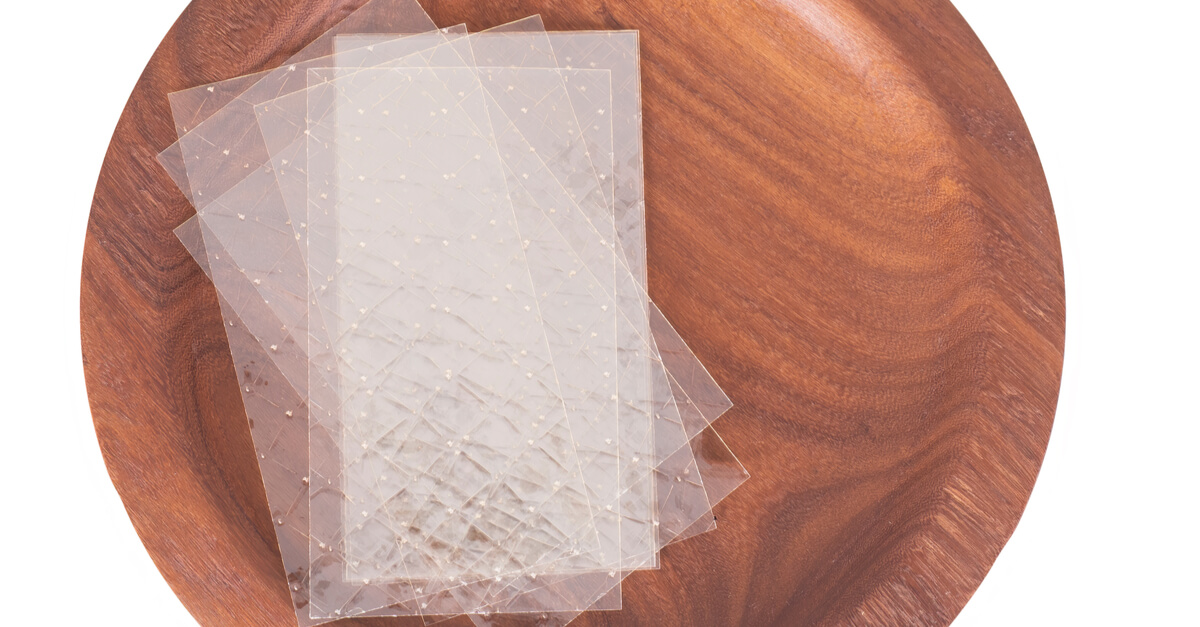How is Leaf Gelatin Made?
The Struggle:
I, much like the rest of you am starved for knowledge. I have an insatiable appetite for culinary information. Every five years or so, I like to look back and cringe at myself for saying, doing, and thinking certain things. Don’t get me wrong, I pride myself on knowing alot about food but I am light years away from knowing everything. I have also come to terms with the fact that I will never be able to learn everything about food. Although I can continue to try. A number of questions came my way in regards to gelatin and it got me thinking. While I know what gelatin is made from I asked myself, “do I really know how it’s made”. There is granulated and leaf gelatin; what’s the difference? Also how are there different blooms of gelatin? So…. down the rabbit hole we go.
“How is leaf gelatin made?”
No Such Thing as a Gelatin Tree
We know gelatin is made from the collagen rich parts of pigs, cows, and fish. The skin, bones, tendon, cartilage and joints all have large amounts of collagen. The way gelatin is extracted is actually very simple. It is not unlike how we make a stock for soups. These parts are placed in water and heated. Now here is where things get interesting. If you alter the pH of the liquid you can extract the gelatin better. In an acidic liquid you will remove Gelatin Type A and in a basic solution you will extract Gelatin Type B. Now before we dive too deep into what these mean, I will say this isn’t a grading system for gelatin. Type A is acidic and Type B is basic. There are few differences between the two of these but the main one that sticks out is type A produces a more viscous product. The most common type of gelatin you will find for kitchen use will be Gelatin type A. You can test this for fun by measuring the ph of a water before and after melting gelatin into it. The melted gelatin solution will be between 4.6 – 5.9.
Now back to how gelatin sheets are made. Once the gelatin has been extracted from the animal product there will be a number of impurities within it. Fats and solids will need to be filtered out. There are a number of filtration processes that the gelatin will go through to remove all the impurities. The level of filtration and refinement that the gelatin goes through will decide the bloom and grade of the gelatin. If you want a deep dive into the different grades and conversion between them see our article “the confusion over conversion” here.
From here the gelatin can be made into two forms. The first form it can be made into is granulated. The gelatin is extruded, dried and ground into the granules. The second form is a leaf gelatin. Depending on the manufacturer some gelatin leaves are dried from the liquid state and others are made into granules and then rehydrated before being made into sheets. Leaf gelatin is a wonderful product because regardless of the grade of gelatin, each leaf will have the same gelling capabilities. A sheet of titanium gelatin and a sheet of platinum gelatin will have the same gelling power. This works for all grades of gelatin sheets. The only difference when it comes to gelling is the weight of each sheet. Other differences are the lower the grade – the lower the clarity and it may impart a slight flavor. One sheet of titanium gelatin weights ~5.5g and one sheet of Platinum gelatin weights ~1.7g the extra weight makes up for its lower gelling capabilities. For example if you have a recipe that asks for 1 sheet of titanium it can be replaced with 1 sheet of any bloom strength of gelatin sheet. Hopefully you found this as fascinating as I did and the next time you are using gelatin you will be able to find exactly what works for you. But if for some reason you can, I will be here to help.



2 Comments.
Conversely, can the same technique be applied to agar or gella gum F? I’ve been waiting for ages for a plant based leaf that can make beautiful clear gels.
we have not found any plant based sheet gelatin, but we have a great vegan gelatin that is a 1 to 1 replacement for powdered gelatin in recipes. This replacement will be a clear set gel.